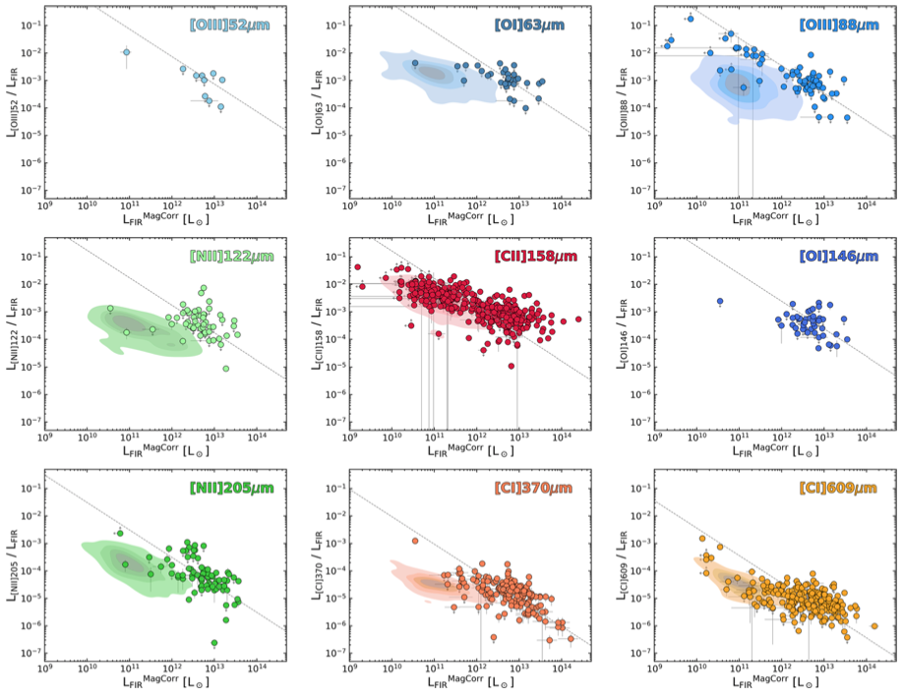The Power of Fine-structure Lines to Unravel the Mysteries of Galaxy Evolution
Infrared fine-structure lines (FSLs) are essential tools for studying the formation and evolution of galaxies, particularly at high redshifts. These lines, which arise from the de-excitation of collisionally-excited atoms like Carbon, Nitrogen, and Oxygen, are highly luminous and trace the metal enrichment and physical conditions of the interstellar medium (ISM). FSLs have been used to:
- Measure the internal dynamics of high-redshift galaxies
- Testing theories about the onset of black hole-host galaxy co-evolution and the presence of gas outflows.
- Trace ISM properties across cosmic reionization, confirming early metal enrichment.
In a recent review entitled “Infrared fine-structure lines at high redshift”, published in the Astronomy & Astrophysics Reviews (A&ARv; by Springer Nature; ), Dr. Decarli (INAF) and Dr. Diaz-Santos (IA-FORTH) have reported the latest advances in galaxy evolution research using these emission lines as powerful diagnostic tools. The work compiled all the line measurements available in refereed publications until the end of 2024, and provided an historic view on the field, including the latest findings reported in the literature.

They concluded the use of FSLs has experienced a rapid advance, especially in the far-infrared (FIR) domain. The leap in sensitivity offered by ALMA, together with the improved capabilities of the NOrthern Extended Millimeter Array (NOEMA) and the Jansky Very Large Array (JVLA) enabled the field to switch from extremely IR-luminous sources to more ‘‘normal’’ classes of galaxies, providing a panchromatic view on how typical galaxies have evolved their ISM through cosmic time.
FSL observations provide critical constraints on the ISM properties of distant galaxies, enabling the estimation of gas masses, star formation rates (SFRs), and internal dynamics. Key findings include the existence of "line deficits" (such as the [CII]/LFIR relation deficit) in highly active galaxies, where the location and slope of these trends are influenced by selection biases but ultimately dictated by underlying physical processes like gas density and the interstellar radiation field.

The future of this research field relies on the synergy between existing facilities (ALMA, NOEMA, JWST, etc.) and next-generation instruments. JWST complements FIR observations by providing rest-frame optical tracers, while the proposed PRIMA space telescope aims to fill a crucial gap in coverage between ~25 and 250 μm. Longer-term goals include a planned major upgrade to ALMA (e.g., increasing collective area by a factor of ~3) and the development of the ngVLA to significantly enhance line sensitivity and angular resolution. This will allow astronomers to probe even shorter rest-frame wavelengths (λ < 50 μm) at z > 6, opening the door to detailed measurements of gas metallicity, density, and ionization in the earliest galaxies.
Article: R. Decarli and T. Diaz-Santos. “Infrared fine-structure lines at high redshift.”, 2025, A&ARv, 33, 4.
